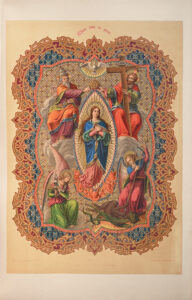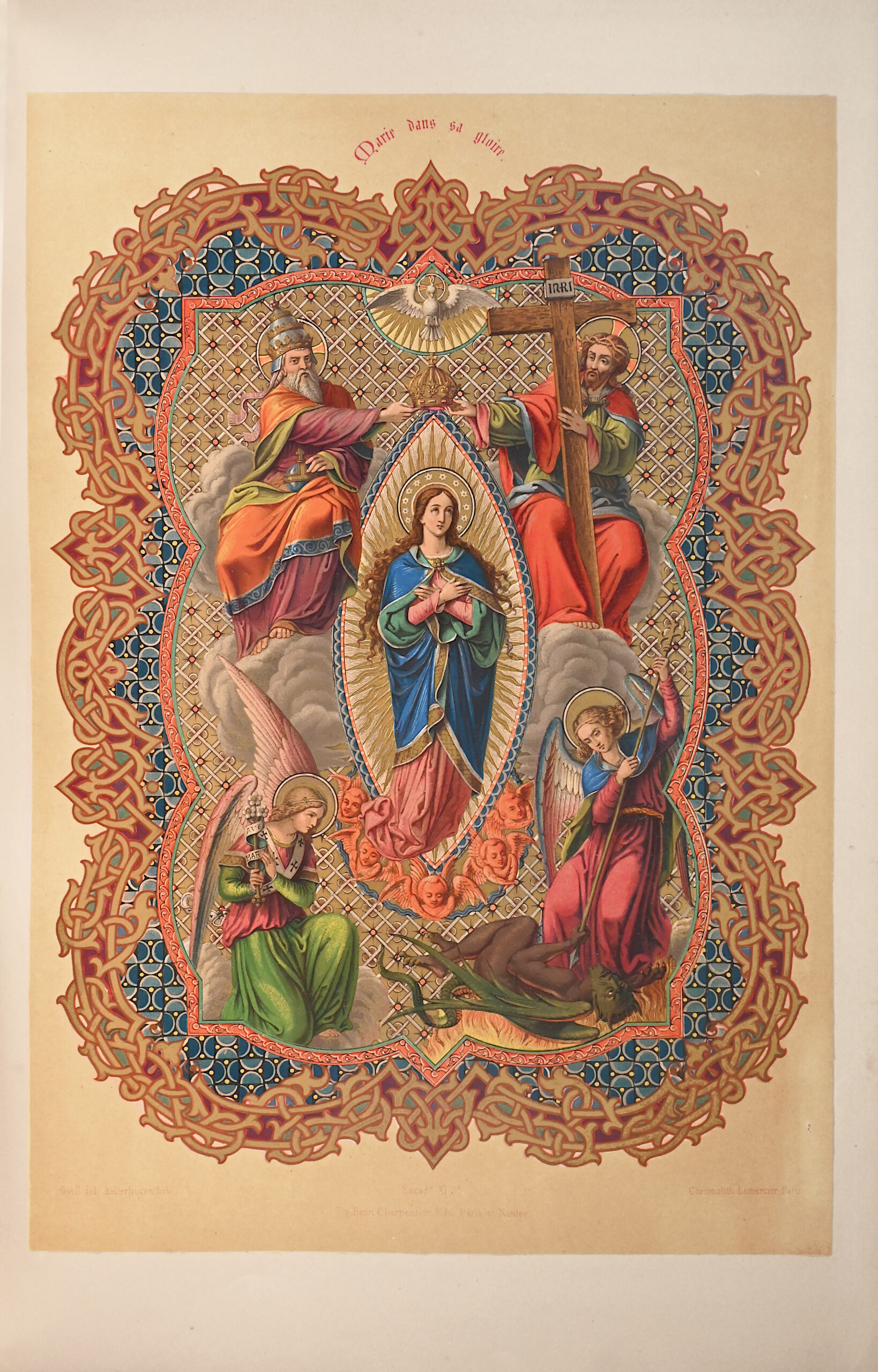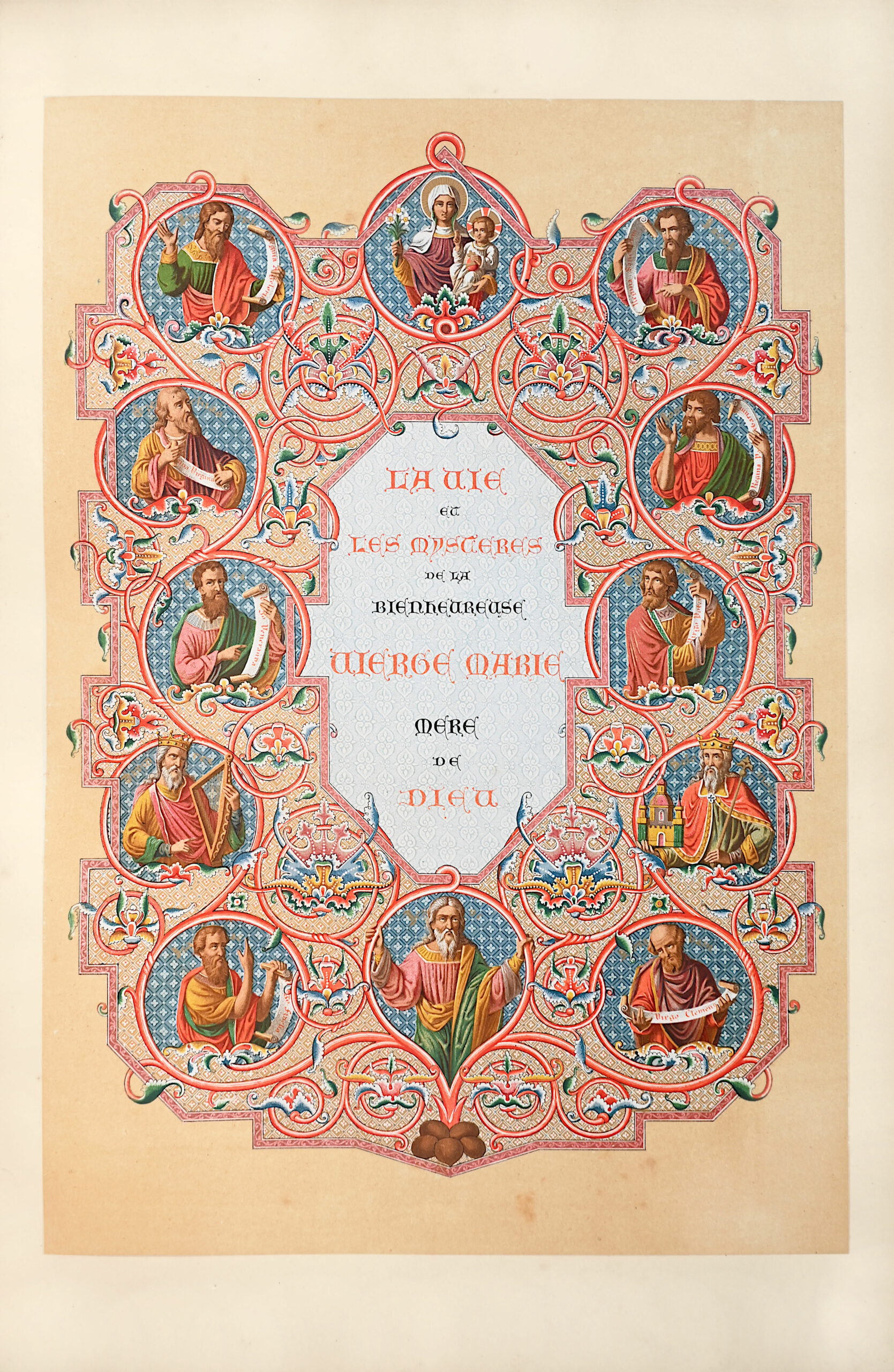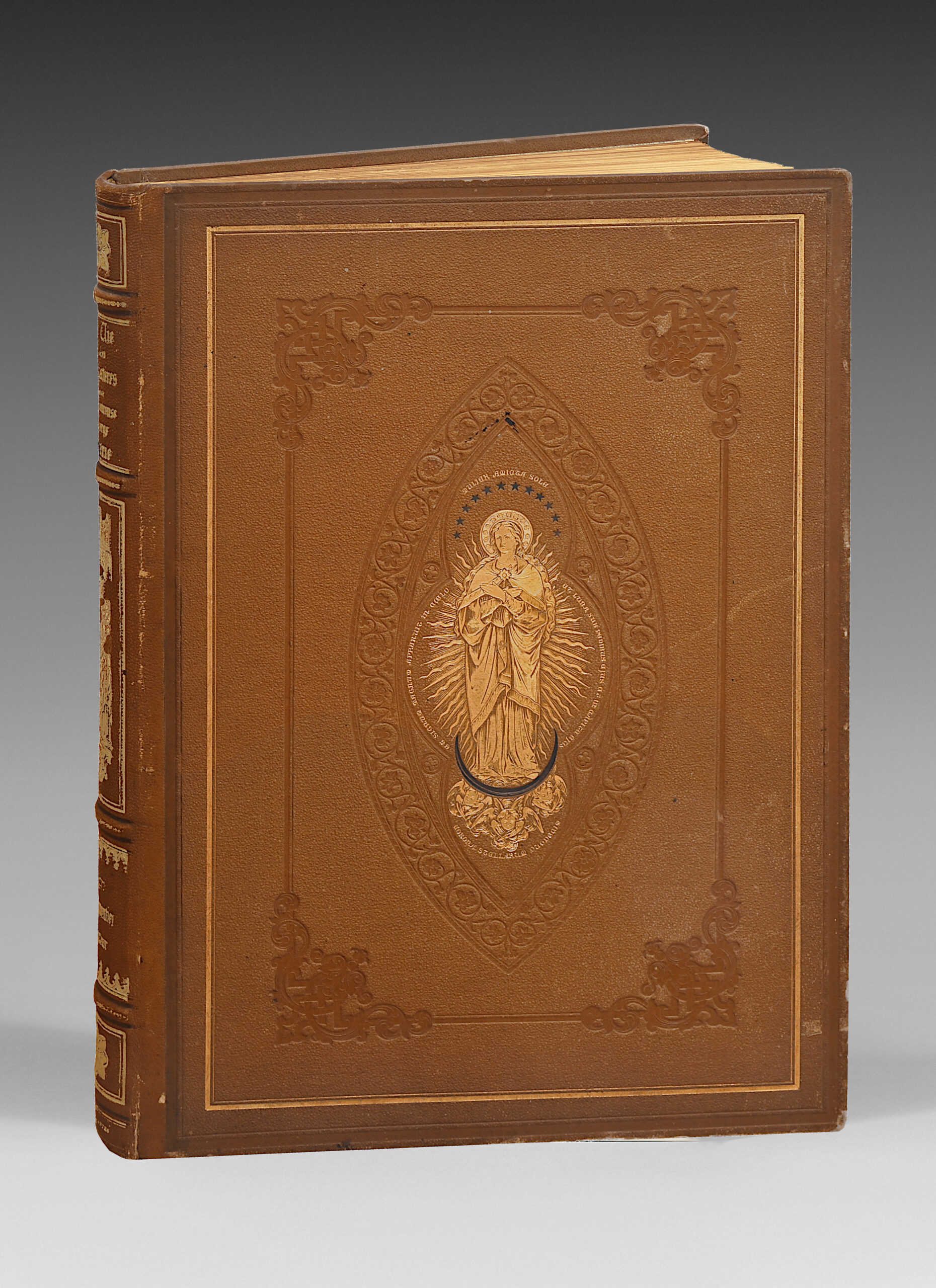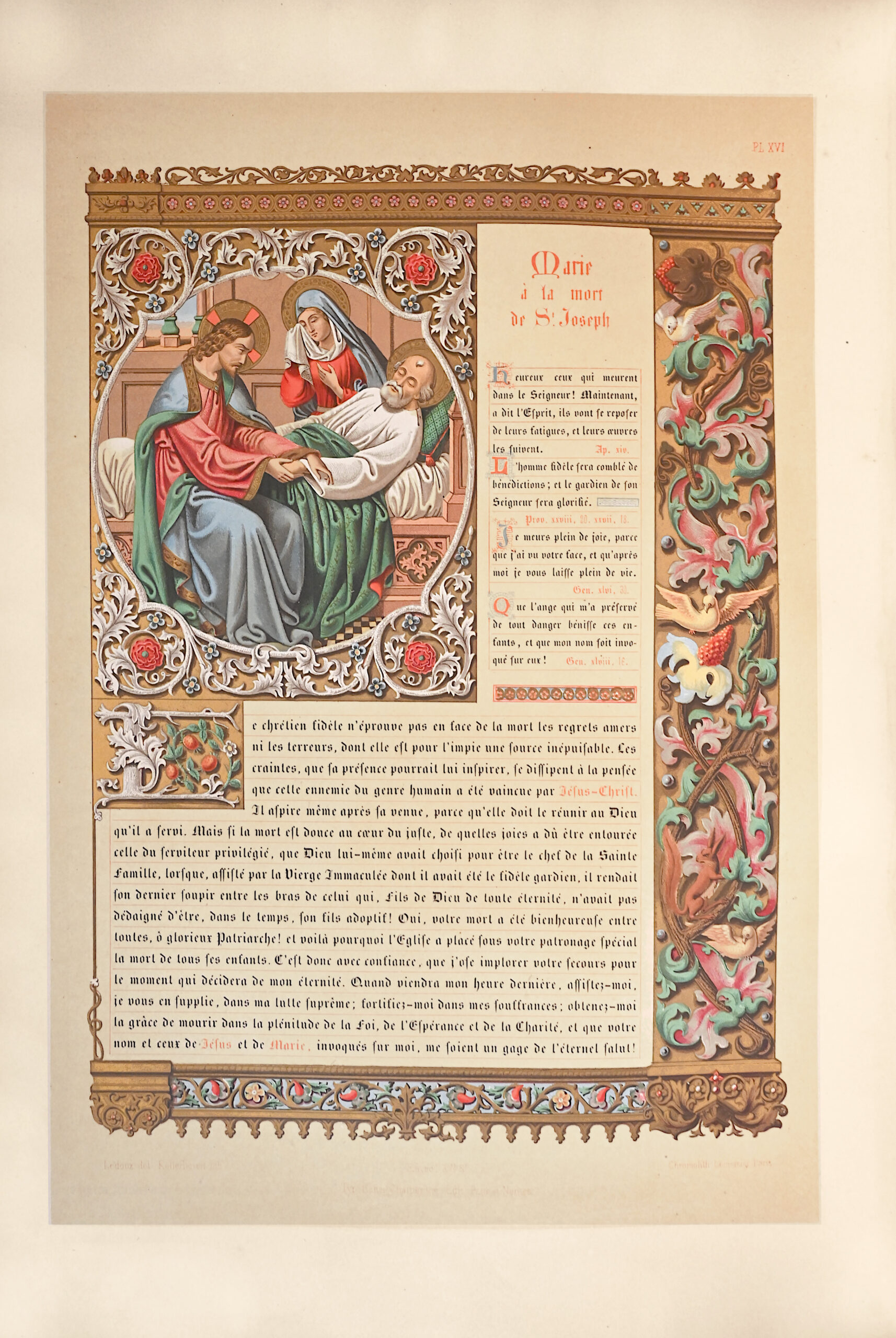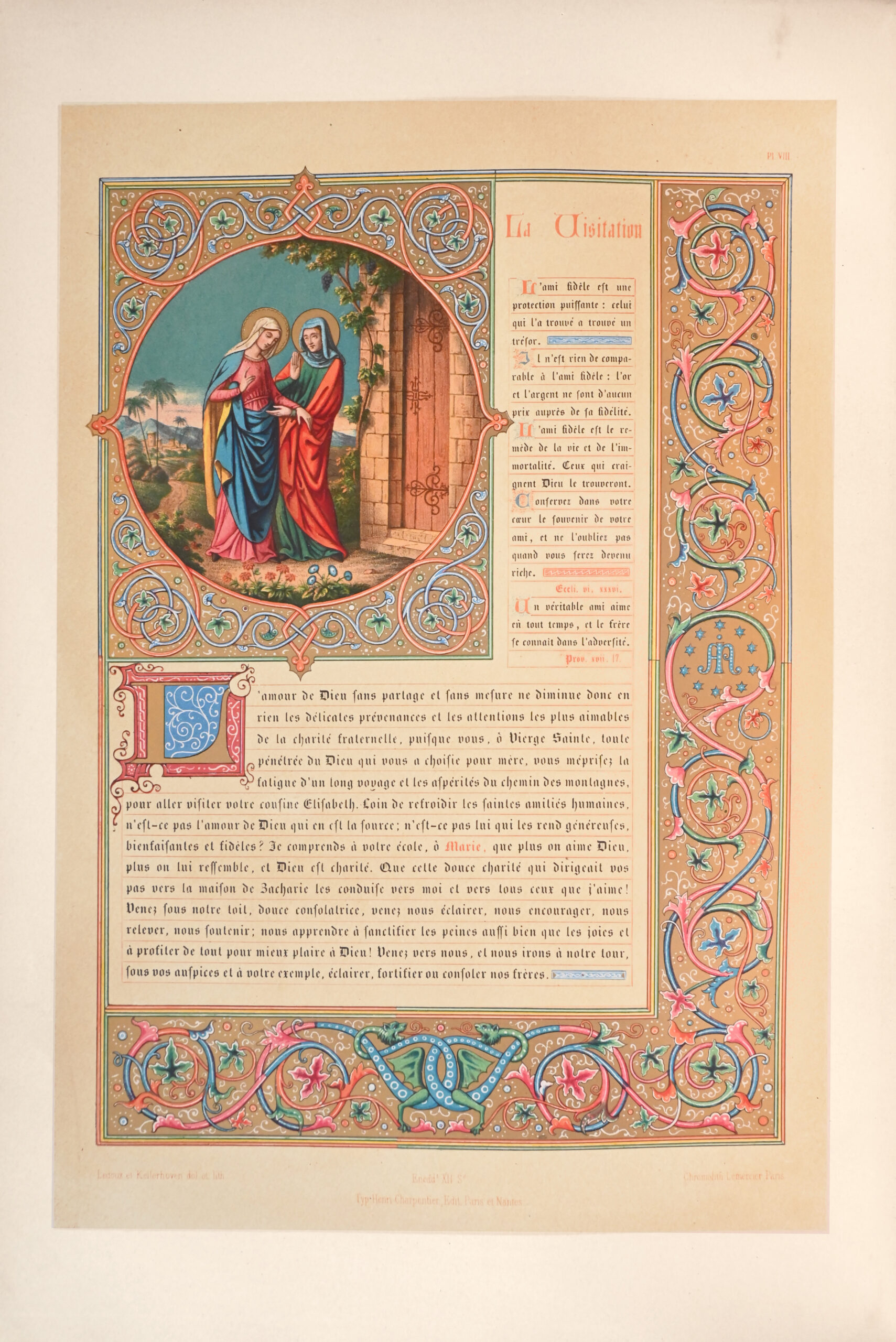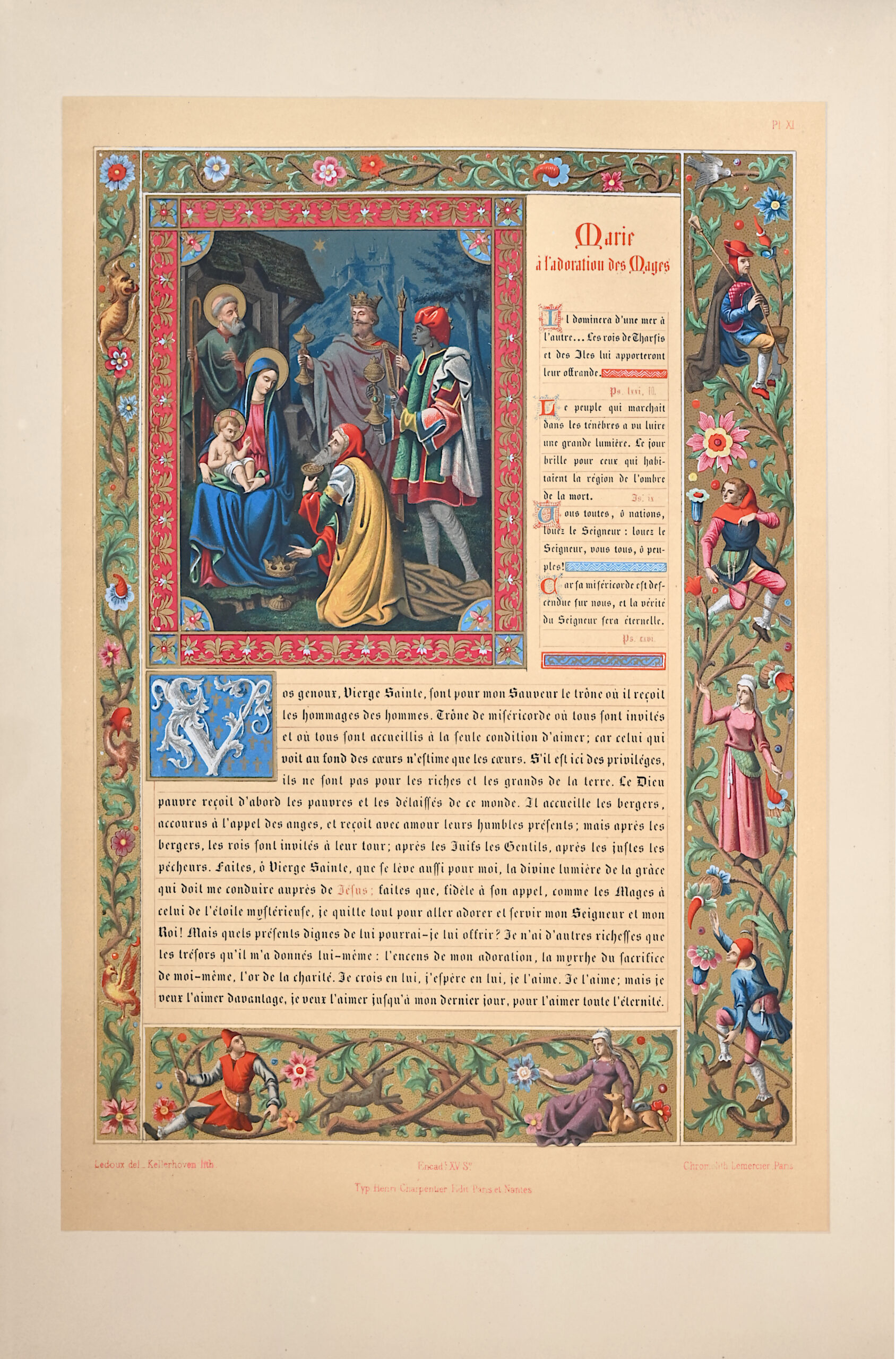Paris, Henri Charpentier, 1859.
Large folio [408 x 295 mm] of 1 colored frontispiece, (4) ll., v pp, 2 full-page colored plates, (1) p., 32 full-page colored plates with as many colored engraved text leaves, (1) l. of Notice to the binder. Publisher’s binding brown shagreen decorated with gold and blind-stamped fillets with frame, central blind-stamped frame with large angular floral ornaments containing in the center 1 large representation of the Holy Virgin gilt on both covers, spine titled in gold decorated with 1 representation of the Virgin and Child and various gilt tools, gilt edges. Contemporary binding.
Sumptuous entirely chromolithographed work, whose pages, typographed in brown and red gothic letters, are decorated with various frames, drawn in bright colors and gilt by Kellerhoven, Gsell, Ciappori and Ledoux at Lemercier, reproducing the ornaments of medieval manuscripts with paintings.
The volume also includes 31 miniatures in chromolithography by the same artists, of which 3 are full page.
“The German printmaker Franz Kellerhoven (1814-1872) was living in Paris in 1859, the year he created the 97 chromolithographs for this pseudo medieval manuscript, titled La vie et les mystères de la Bienheureuse Vierge Marie, mère de Dieu = Life and the mysteries of the Blessed Virgin Mary, Mother of God. The British Museum identifies them as oleographs, or chromolithographs printed with an oil-based ink to replicate the look of a painted illumination.
Although the text was written by Arthur Martin (1801-1856), it is usually the Nantes printer/publisher Pierre Henri Charpentier (1788-1854) who receives the most credit for the project. The lithographs were printed at the Paris shop of Lemercier and the text in Nantes, “tirage a la presse a bras” (printed on a hand-worked press).
It is interesting that similar facsimiles were produced in installments over several years, not unlike a Dickens novel. Subscribers received a small section of the book as it was being produced. There is no documentation that Charpentier followed that process with La vie, but 97 lithographs from ten stones each (970 passes) would have taken a very long time to complete. Charles Wood III notes that binding directions are found on the final leaf.
Michael Twyman reminds us that Kellerhoven only undertook two major commissions with the French lithography firm of Lemercier & Cie., this being one. “In [this] book he put on stone work that Ledoux, Gsell, and Ciappori had drawn in the spirit of illuminated manuscripts of the seventh to seventeenth centuries . . . The amount of chromolithographic work needed for this publication in such a short period suggests that Kellerhoven must have employed several assistants . . . (A History of Chromolithography, pp. 352-3). (Graphic Arts Collection, Princeton University).
A nice fresh copy preserved in its contemporary publisher’s binding.
Library of the Château de Lalande with ex libris.
See less information
